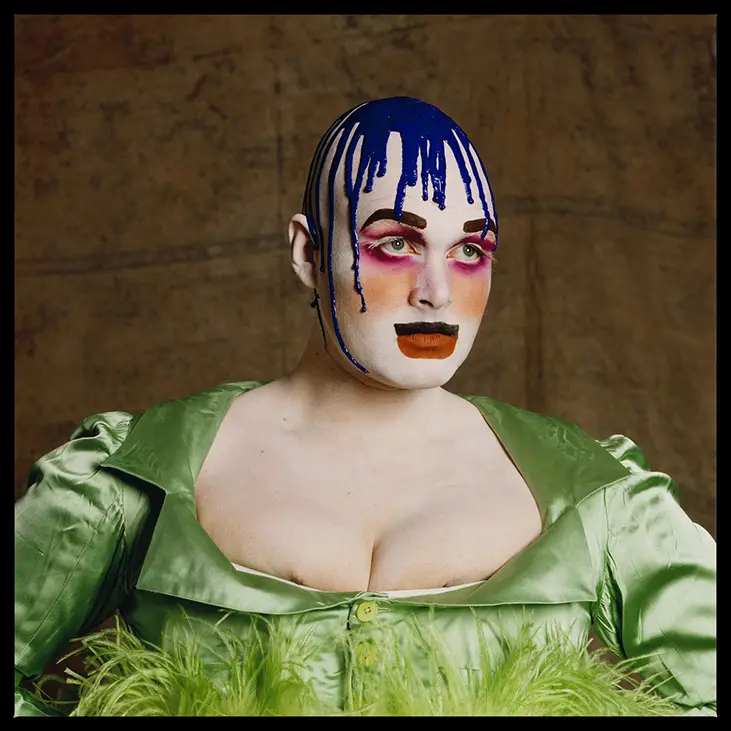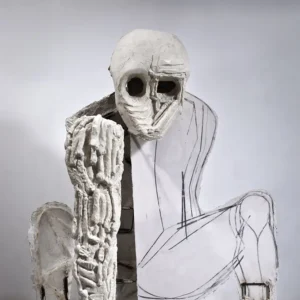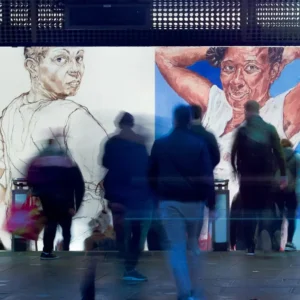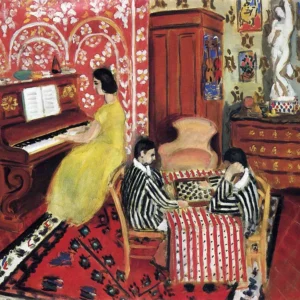Leigh Bowery is the subject of a major show at Tate Modern, a Broadway musical, paintings by the famed Lucian Freud, and even a contemporary dance piece at the Edinburgh Fringe Festival. But who was he, and why does the artist inspire such profound reactions, even decades after his passing?
Bowery played many roles: 80’s club scene legend, performance artist, designer, and muse. His art and life defy easy categorization – in a 1993 interview with the Guardian, Bowery says, “If you label me, you negate me.” As an artist, he was known for his shocking outfits and performances. As a person, he was described as unexpectedly polite, even shy, but prone to bursts of outrageous behavior.
It is difficult to separate the Bowery’s person from his art; it seems he treated his life as a sort of performance piece. In all elements of his life, he sought to push boundaries and truly shock – he was no stranger to the uncomfortable and inappropriate. Bowery was larger than life; there is no one way to remember him, except as a completely singular individual.
Who was Leigh Bowery?
Leigh Bowery was born on March 26, 1961, in a suburb of Melbourne. He learned how to sew from his mother at an early age, igniting an interest in clothing and design. As a teen, he entered the Royal Melbourne Institute of Technology to study fashion. However, he only stayed there a year before moving to London in 1980 to pursue artistic independence.
Upon his arrival in London, he worked various jobs and made clothes for friends in order to supplement his income. During this time period, he became more and more involved in the city’s post-punk club scene, working by day and dancing by night. He made his own outfits, parodying and exaggerating the popular looks of the era to their extremes.
In 1985, while Bowery was still designing for friends, club owner Tony Gordon asked him to serve as the public face of Taboo, a tiny nightclub on Leicester Square. Bowery performed in the gallery’s window space for two days in a row, where the audience was able to see him through a two-way mirror.
This quickly turned into a weekly event, and Bowery became the face of the club, boasting a new, bold outfit every week. Under his stewardship, Taboo became known for being avant-garde, hip, and highly exclusive. The club would come to be frequented by the likes of George Michael and Boy George.
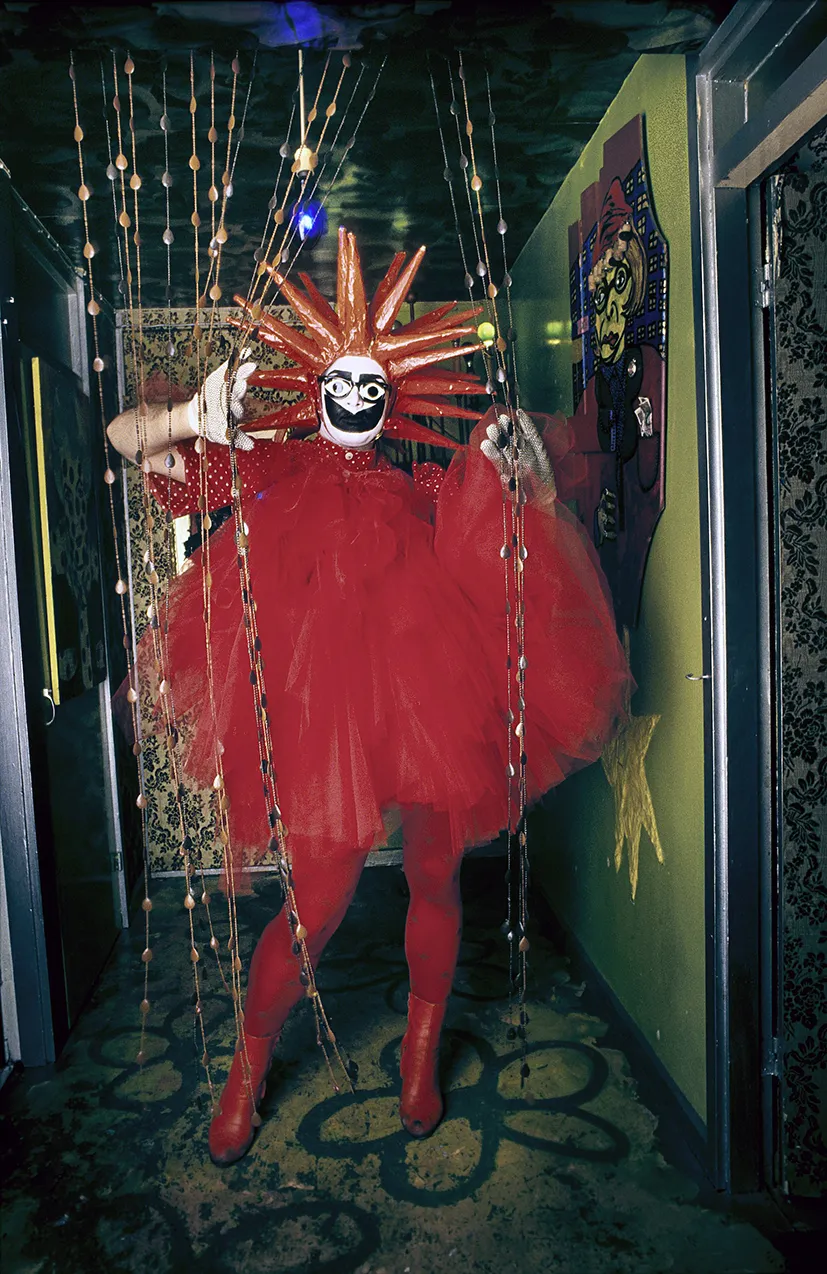
Leigh Bowery’s Art
Despite his lack of formal training, Bowery became known for the originality and craft of his handmade designs. He wore them out to clubs, challenging even the wild fashions of London nightlife. Throughout his short but incredibly prolific career, he evolved from painting his body different colors, including polka dots, piercing his cheeks to attach huge fake lips to his face with safety pins, and wearing dresses with hoods that obscured his entire face.
In the later moments of his artistic journey, he became increasingly interested in altering the shape of his body. His dresses included daring, even sculptural, silhouettes, emphasizing asymmetricality and distortion.
He poured drips of wax on his bald head. He played with his own height; wearing hidden high heels under his pants to exaggerate his height to epic proportions. His work borders the lines between camp and grotesque: in a 1988 interview, he proclaims his love of sequins while sitting in a restaurant wearing a full-body floral dress, the only exposed skin an exaggeratedly lipsticked mouth.
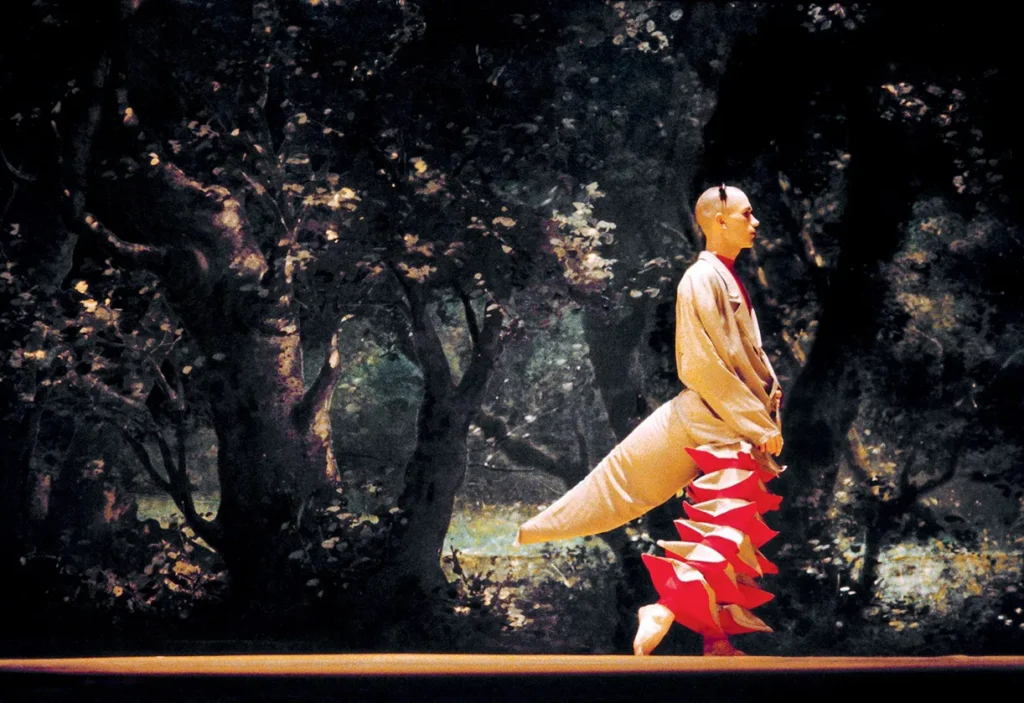
What is Leigh Bowery Known For?
Bowery’s work was also recognized outside of the world of London nightlife. He designed costumes for many shows by Scottish dancer and choreographer Michael Clark, including No Fire Escape in Hell in 1986, for which he received a New York Dance and Performance Award for Visual Design. Bowery also made appearances in Clark’s productions, starting with Because We Must in 1987. He was featured on the cover of i-D, a fashion and youth culture magazine, in June 1987.
In 1988, art dealer Anthony d’Offay invited him to host a show at his gallery in London. There, Bowery made his first public appearance in the realm of visual art. For a week, he posed in front of a two-way mirror in the gallery, each day changing to a different, flamboyant outfit, to much public acclaim.
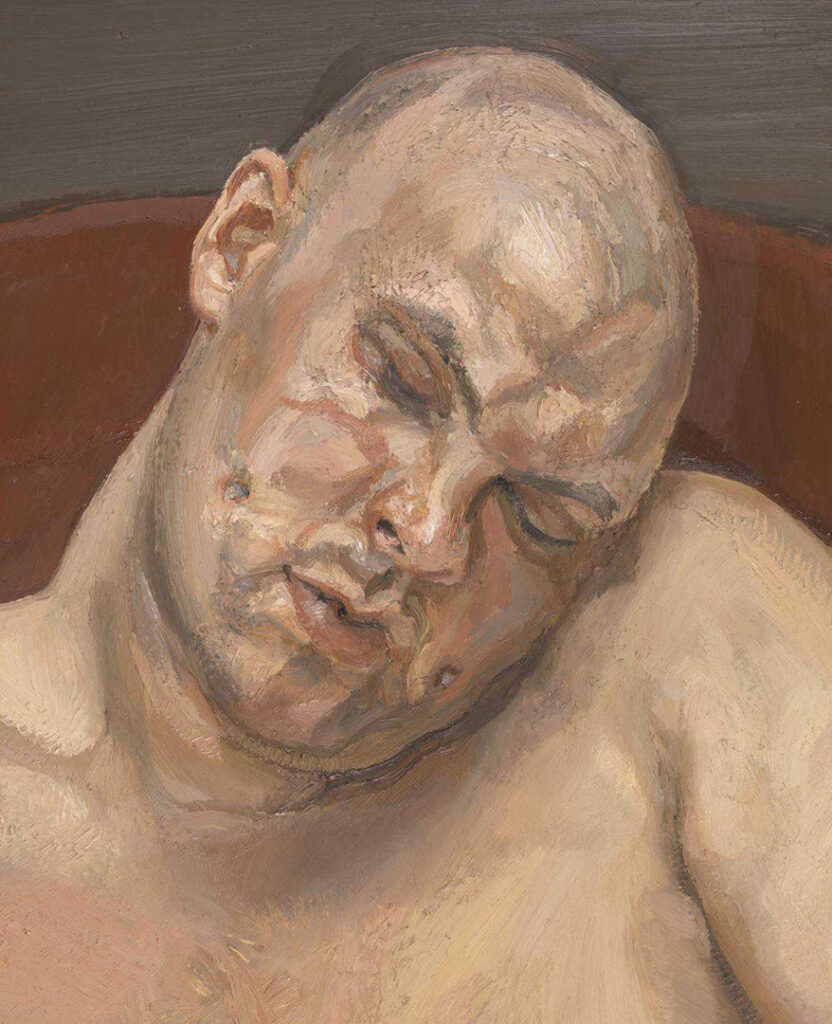
Leigh Bowery and Lucian Freud
At the Anthony d’Offay Gallery, Bowery was introduced to the prominent contemporary portrait artist Lucian Freud. This was the beginning of an intense and fruitful friendship: Bowery would become the artist’s muse for a series of confrontational nude portraits.
Lucian Freud painted the body in a shocking way; highlighting the beauty of the unconventional and the abject. Bowery was interested in the grotesque body in a similar way – masochistically taping his chest, piercing his cheeks, and wearing bizarre makeup.
Strikingly, Freud’s paintings of Bowery portray him without his distinctive outfits. Rather, he painted the performance artist disrobed, in a state of vulnerability, playing with the contrast between performer and human.
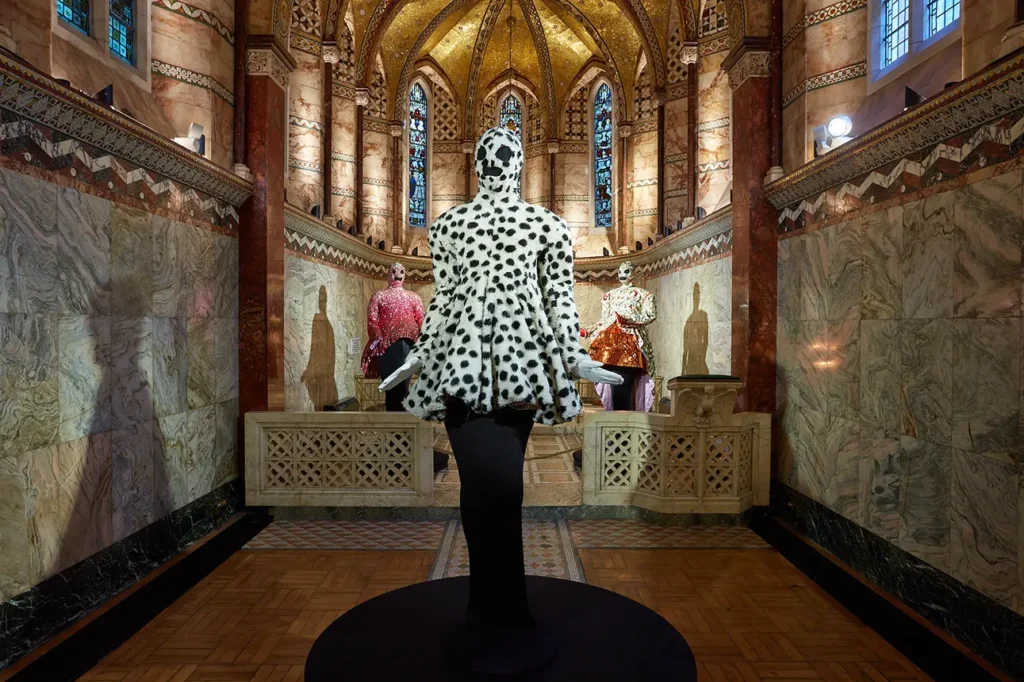
Leigh Bowery’s Death
Unfortunately, Bowery’s exuberant life met an early end. In 1994, right before the end of the AIDS crisis, Bowery passed away from HIV-related pneumonia.
At a time when much of the gay community was dying rapidly, Bowery did not want to be defined by his HIV diagnosis. He kept his illness a secret for years, and, on his deathbed, even spread rumors that he was disappearing to a foreign country. His passing was a sudden shock to many of his friends.
His wife now owns the Leigh Bowery Estate, which includes a collection of press clippings, photographs, diaries, postcards, video footage, and about fifty outfits. Take A Bowery: The Art and (Larger Than) Life of Leigh Bowery, a significant retrospective exhibition organized by the Museum of Contemporary Art in Sydney in 2003, was based on this collection.
The National Portrait Gallery in London and the National Portrait Gallery in Canberra both own photographic portraits of Bowery, while Freud’s paintings are in private collections at Tate Britain and the Metropolitan Museum of Art in New York. Two of Bowery’s costumes are in the National Gallery of Victoria, and a Melbourne theater in St. Albans bears his name.
Tate Modern 2025: Leigh Bowery!
Leight Bowery! at Tate Modern delves into the artist’s meteoric rise within London’s club scene in the 1980s, spotlighting his radical performances that transformed the human body into a dynamic, shape-shifting medium of artistic expression.
The exhibition showcases Bowery’s iconic “Looks” alongside collaborations with renowned artists such as Lucian Freud, Michael Clark, and Charles Atlas. Through an eclectic mix of costumes, performances, and archival material, the show highlights Bowery’s ability to blur the lines between art, fashion, and life, exploring Bowery’s influence on figures like Alexander McQueen, Lady Gaga, and RuPaul.
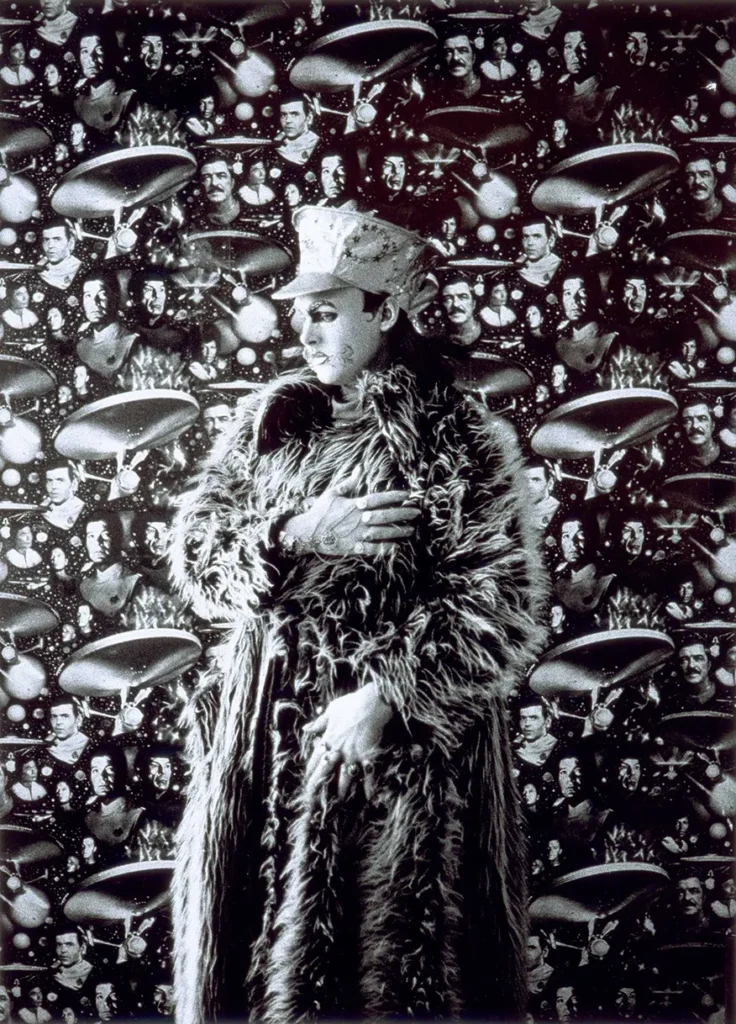
Leigh Bowery’s Legacy
Leigh Bowery created an inimitable legacy in fashion, art, and performance. His unique style of using his body as a canvas challenged the standards and boundaries of creativity at that time. His recognition, starting with his club performance and continuing with Lucian Freud, made him impactful to contemporary art, drag culture, and avant-garde fashion. Inspiring the likes of Vivienne Westwood and Alexander McQueen, his contributions to the art world ensured his impact on art to disrupt, inspire, and redefine.

